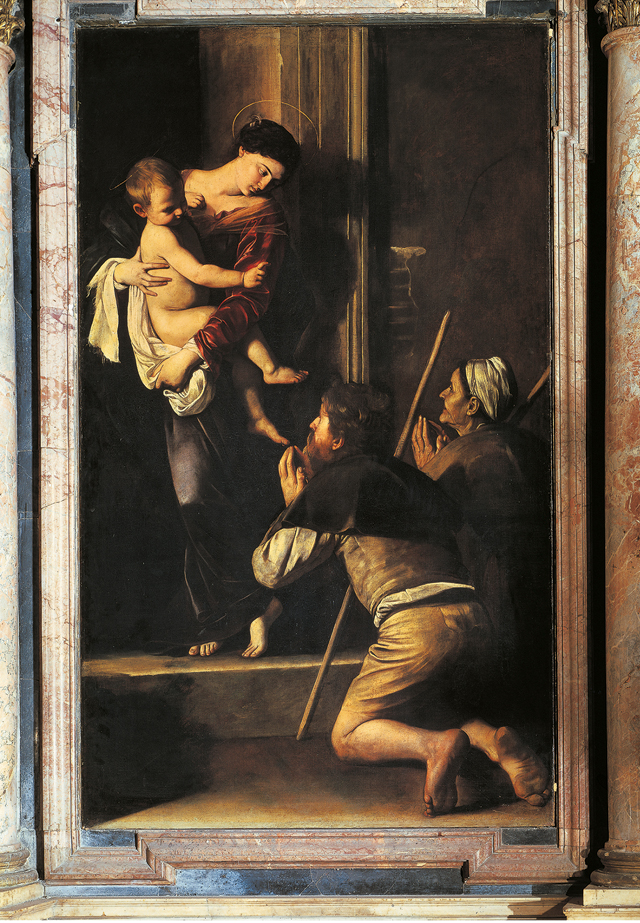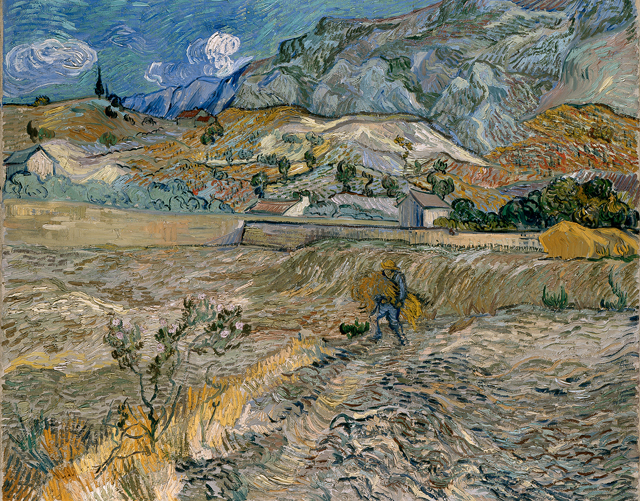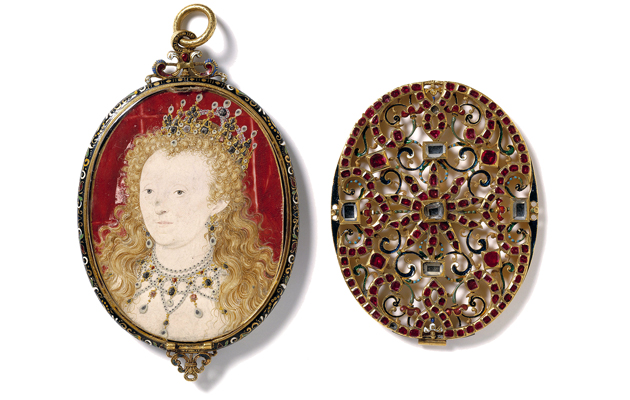My favourite painting: Fiona Shaw
Fiona Shaw chooses her favourite painting for Country Life.


The Madonna of Loreto by Michelangelo Merisi da Caravaggio (1571–1610), 8ft 61⁄2in by 5ft, Church of Sant’Agostino, Rome. Bridgeman Images.
Fiona Shaw says: This painting hangs above a tiny altar on the left of the entrance to Sant’Agostino, so I dip in and out of the church whenever I’m in Rome. I first saw it in an exhibition at the Royal Academy; it was a private view at midnight and you honestly felt she was going to jump out at you. With her lovely big baby, she could be any woman and Caravaggio’s painting is so sensual, such an immense celebration of her beauty that he must surely have loved her. But, supposedly, he later found she was engaged to another man who, when he saw the painting, picked a fight with the artist and was killed by him. After that, Caravaggio was on the run and never able to work properly again. It’s very rare that a painting holds a death warrant in this way. In a sense, it contains Caravaggio's own future.
John McEwen comments: At Loreto, in 2012, Benedict XVI said: ‘Mary, who is the Mother of Christ, is also our mother, and she opens to us the door to her home, she helps us enter into the will of her Son.’
Caravaggio’s Madonna of Loreto proclaimed the same message 400 years ago. His envious rival, the journeyman painter Giovanni Baglione (1563–1643), who sued him for libel, was also author of the first biography. He wrote: ‘Caravaggio painted a Madonna di Loreto portrayed from the life, with two pilgrims, one of them with muddy feet, and the other wearing a torn and soiled bonnet; and because of these frivolities in the details... the populace loved them.’
The picture shows two pilgrims before the shrine of the Virgin at Loreto, the most popular site of Marian pilgrimage until Lourdes. The object of their veneration is the Blessed Virgin’s house in Nazareth, turned into a chapel by Empress Helena in the 4th century. To save it from the Mohammedan infidel, it was miraculously airborne ‘by angels’ in 1294, via Croatia to Loreto on the Adriatic coast north-east of Rome. At Loreto, it was installed in a basilica and encased in a majestic marble screen designed by Bramante.
Caravaggio brings the Madonna and Child to life for the faithful pilgrims. Showing Mary and Jesus as one of us did not conform with Cardinal Paleotti’s contemporary rulebook Discourse on sacred and profane images, hence Baglione’s trouble-stirring description.
In 1920, Benedict XV made Our Lady of Loreto patron saint of air travellers and pilots.
Sign up for the Country Life Newsletter
Exquisite houses, the beauty of Nature, and how to get the most from your life, straight to your inbox.
This article was originally published in Country Life, July 8, 2015.

My favourite painting: Hughie O’Donoghue
Hughie O’Donoghue chooses his favourite painting for Country Life.

My favourite painting: Matthew Girling
Matthew Girling chooses his favourite painting for Country Life.
Country Life is unlike any other magazine: the only glossy weekly on the newsstand and the only magazine that has been guest-edited by HRH The King not once, but twice. It is a celebration of modern rural life and all its diverse joys and pleasures — that was first published in Queen Victoria's Diamond Jubilee year. Our eclectic mixture of witty and informative content — from the most up-to-date property news and commentary and a coveted glimpse inside some of the UK's best houses and gardens, to gardening, the arts and interior design, written by experts in their field — still cannot be found in print or online, anywhere else.
-
 Six rural properties with space, charm and endless views, as seen in Country Life
Six rural properties with space, charm and endless views, as seen in Country LifeWe take a look at some of the best houses to come to the market via Country Life in the past week.
By Toby Keel
-
 Exploring the countryside is essential for our wellbeing, but Right to Roam is going backwards
Exploring the countryside is essential for our wellbeing, but Right to Roam is going backwardsCampaigners in England often point to Scotland as an example of how brilliantly Right to Roam works, but it's not all it's cracked up to be, says Patrick Galbraith.
By Patrick Galbraith
-
 My favourite painting: Allan Mallinson
My favourite painting: Allan MallinsonMilitary historian Allan Mallinson picks an image of 'faith, generosity and ultimate sacrifice'.
By Charlotte Mullins
-
 My Favourite Painting: Piet Oudolf
My Favourite Painting: Piet Oudolf'One cannot sense whether he is far out on the ocean or closer to shore, or what he may be watching or feeling in that moment as he stares towards the beach.’
By Country Life
-
 My Favourite Painting: Mary Plazas
My Favourite Painting: Mary Plazas'There is compassion, awe, humility, a knowing yet a questioning in the glistening eyes. It moves me, it inspires me beyond the need to know.’
By Country Life
-
 My favourite painting: Robert Kime
My favourite painting: Robert KimeRobert Kime shares his fondness for New Year Snow by Ravilious
By Country Life
-
 My Favourite Painting: Anna Pavord
My Favourite Painting: Anna PavordAnna Pavord chooses a picture which reminds her of where she grew up
By Country Life
-
 My favourite painting: The Duchess of Wellington
My favourite painting: The Duchess of WellingtonThe Duchess of Wellington chooses her favourite painting for Country Life.
By Country Life
-
 My favourite painting: Maureen Lipman
My favourite painting: Maureen LipmanMaureen Lipman chooses her favourite painting for Country Life.
By Country Life
-
 My favourite painting: Jacqueline Wilson
My favourite painting: Jacqueline Wilson'I looked at this painting and decided to write about a Victorian circus girl one day'
By Country Life